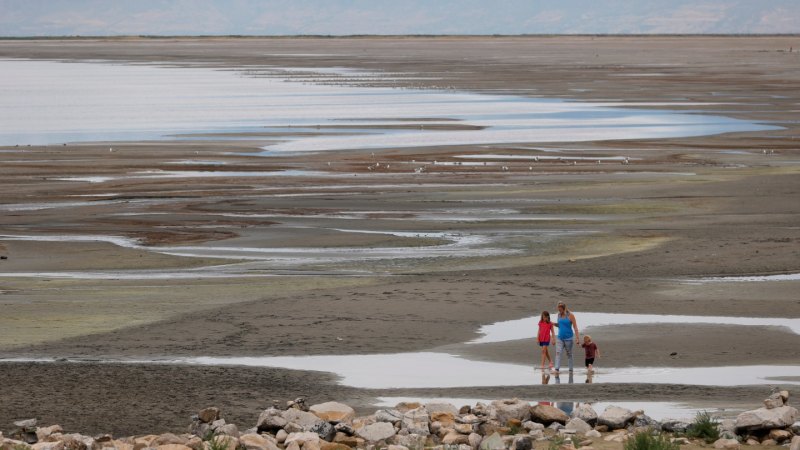Dust pollution is known to contribute to asthma and heart and lung disease. But dust blowing from Utah’s Great Salt Lake could pack an extra unwanted punch.
Metals in the dust and sediment from around Great Salt Lake are more reactive than dust from nearby lake beds, researchers report in the November Atmospheric Environment. When inhaled, the dust has the potential to cause inflammation, though the actual impacts to people in the area will require further study.
The Great Salt Lake has been steadily shrinking as drought, climate change and consumption remove water faster than it can be replenished, leaving over 1,900 square kilometers of the lake bed exposed (SN: 4/17/23). As the lake dries out, it leaves behind dust laden with metals, minerals and sediment that had been carried into the lake from upstream.
To better understand the dust’s composition, chemical engineer Kerry Kelly and colleagues aerosolized samples collected from around the lake. Then they filtered out any dust particles wider than 10 micrometers, leaving only the dust particles small enough to inhale.
Analysis of the inhalable particles revealed several metals — including manganese, copper, iron and lead — at higher concentrations than dust from other nearby playas. Lithium and arsenic were also present at levels exceeding the U.S. Environmental Protection Agency’s regional screening levels, a reference point for further risk evaluation.
The team also found that the oxidative potential of the Great Salt Lake dust, which indicates how likely the dust is to generate reactive oxygen species, is generally higher than that of dust from other nearby lakes. Reactive oxygen species are unstable molecules containing oxygen that interact with — and sometimes damage — molecules in living cells.
“Our body has all kinds of antioxidants,” says Kelly, of the University of Utah in Salt Lake City. These compounds allow us to breathe in and handle reactive oxygen species — to a point. “However, if we get too much of these reactive particles or reactive species that enter our lungs, it can cause an imbalance. Then that can lead to inflammation, and then inflammation leads to a number of adverse health effects.”
But experts advise against jumping to conclusions. “I think it’s fine to look at environmental components, and to look at their potential for having this or that effect,” says David Lo, a biomedical scientist at the University of California, Riverside. “But then you want to ask on the same side, is there any evidence that people are actually being harmed?” Correlating exposure to highly oxidative dust with specific public health outcomes would require more data on the extent of exposure and studies linking oxidative potential to specific health concerns, he says.
Kelly agrees. “I don’t want to say, ‘The sky is falling, we’re all going to die.’” Rather, she says, the study “shows that the dust from the Great Salt Lake is potentially a significant health concern, so we need to do more work.” Utah has funding for equipment to measure the extent to which dust from Great Salt Lake blows into nearby cities, she says, but it hasn’t been deployed.
“We also need to get more water back in the Great Salt Lake,” Kelly says, “because that is really the solution.”


